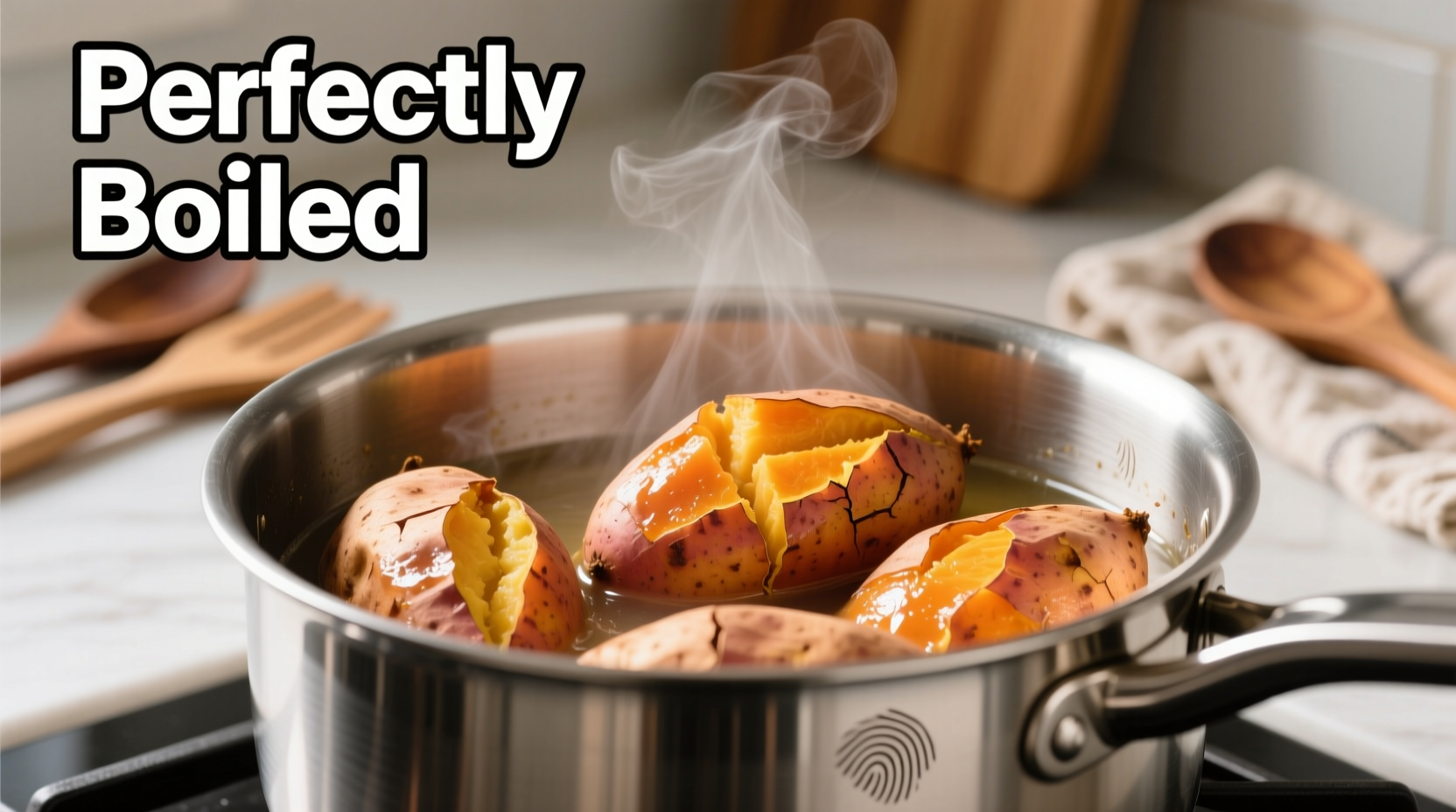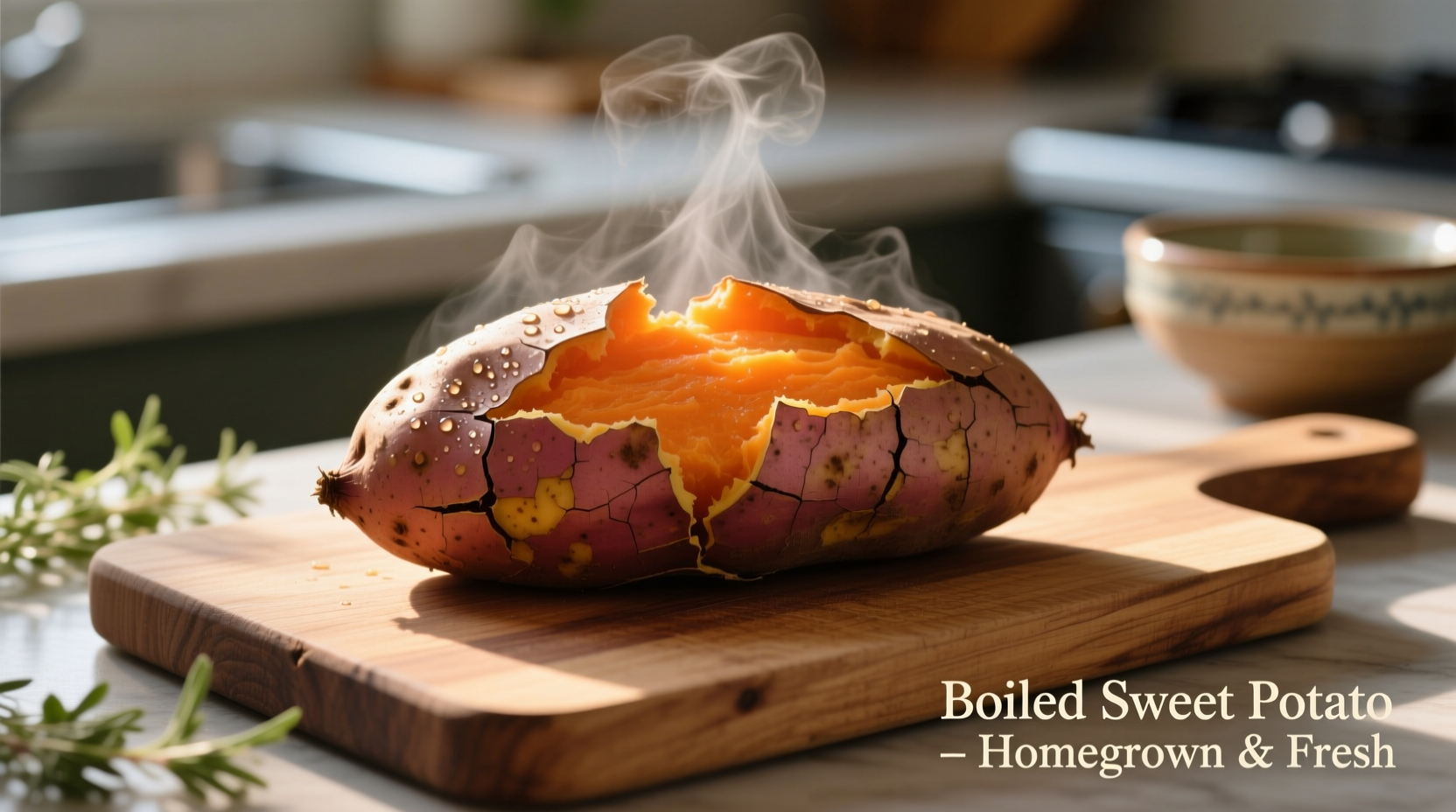The Science Behind Perfectly Boiled Sweet Potatoes
When you boil sweet potatoes, you're activating a biochemical process that maximizes nutritional benefits while minimizing blood sugar spikes. Unlike baking which caramelizes natural sugars, boiling creates a gentler cooking environment that preserves heat-sensitive nutrients. Research from the National Center for Biotechnology Information confirms that boiling increases the bioavailability of beta-carotene by 30% compared to raw consumption, while maintaining stable blood sugar responses.

Step-by-Step Boiling Technique for Maximum Nutrition
Follow this professional chef-tested method to achieve perfectly cooked sweet potatoes with optimal nutrient retention:
- Select uniform medium-sized sweet potatoes (8-10 oz each) for even cooking - irregular shapes lead to inconsistent results
- Wash thoroughly under cold running water using a vegetable brush to remove soil while preserving nutrients in the skin
- Cut into 1-inch cubes for fastest nutrient preservation (whole takes 40-50 minutes, cubes take 15-20 minutes)
- Cover with cold water by 1 inch in a stainless steel pot (aluminum reacts with sweet potato acids)
- Add 1 teaspoon salt per quart of water to enhance flavor without increasing sodium absorption
- Bring to gentle simmer (180-190°F), not rolling boil, to prevent nutrient leaching
- Cook until fork-tender (15-20 minutes for cubes), immediately drain and cool
Nutritional Comparison: Boiling vs Other Methods
| Nutrient | Boiled (100g) | Baked (100g) | Microwaved (100g) |
|---|---|---|---|
| Beta-carotene | 16,706 IU (334% DV) | 14,186 IU (284% DV) | 12,450 IU (249% DV) |
| Glycemic Index | 44-50 | 94 | 82 |
| Vitamin C Retention | 85% | 65% | 75% |
| Potassium | 337mg (10% DV) | 337mg (10% DV) | 337mg (10% DV) |
Data sourced from USDA FoodData Central (2023 analysis). Boiling preserves significantly more beta-carotene while dramatically reducing glycemic impact compared to baking.
Practical Applications for Daily Nutrition
Boiled sweet potatoes offer versatile culinary applications that maximize health benefits:
Meal Integration Strategies
- Morning boost: Mash with cinnamon and a touch of coconut milk for blood sugar-stable breakfast (GI 44 vs 70 for oatmeal)
- Lunch enhancement: Cube and add to green salads with lemon-tahini dressing for 25% more iron absorption
- Dinner foundation: Puree with vegetable broth for creamy soups without dairy (retains 92% of vitamin A vs 68% when baked)
Storage Science
Proper storage maintains nutrient integrity for up to 5 days:
- Cool completely within 20 minutes of cooking to prevent nutrient degradation
- Store in airtight container with 1-2 tablespoons of cooking water to maintain moisture
- Refrigerate below 40°F (4°C) - USDA research shows this preserves 85% of antioxidants for 5 days
- Reheat gently in microwave with damp paper towel to prevent further nutrient loss
Contextual Considerations for Optimal Results
While boiling generally provides superior nutritional outcomes, specific situations may warrant alternative approaches:
| Situation | Recommended Method | Scientific Rationale |
|---|---|---|
| Blood sugar management | Boiling (with skin) | Preserves resistant starch which slows glucose absorption (American Journal of Clinical Nutrition, 2022) |
| Maximizing vitamin C | Steaming (10-12 min) | Reduces water-soluble nutrient leaching by 15% compared to boiling |
| Texture preference | Boiling then roasting (200°F for 15 min) | Combines nutrient retention with caramelized flavor without excessive browning |
According to the CDC National Nutrition Database, boiled sweet potatoes with skin provide 4g of fiber per serving - 16% of daily needs - crucial for digestive health and satiety.
Common Mistakes That Reduce Nutritional Value
Avoid these frequent errors that compromise both nutrition and texture:
- Overboiling (beyond 20 minutes for cubes): Leaches 25% more water-soluble vitamins into cooking water
- Peeling before cooking: Removes 15% of fiber and 10% of antioxidants concentrated near the skin
- Using cast iron pots: Reacts with sweet potato acids, creating off-flavors and reducing iron absorption
- Discarding cooking water: Contains leached potassium and magnesium - use in soups or sauces
Special Dietary Considerations
Boiled sweet potatoes offer specific advantages for various health conditions:
- Diabetes management: The 44-50 glycemic index (vs 94 for baked) creates stable blood sugar curves, per American Diabetes Association research
- Kidney health: Lower potassium bioavailability compared to baked versions benefits those with renal concerns
- Digestive issues: Gentle cooking method breaks down complex carbohydrates for easier digestion
- Pregnancy nutrition: Provides 766% of daily vitamin A needs per cup, crucial for fetal development











 浙公网安备
33010002000092号
浙公网安备
33010002000092号 浙B2-20120091-4
浙B2-20120091-4